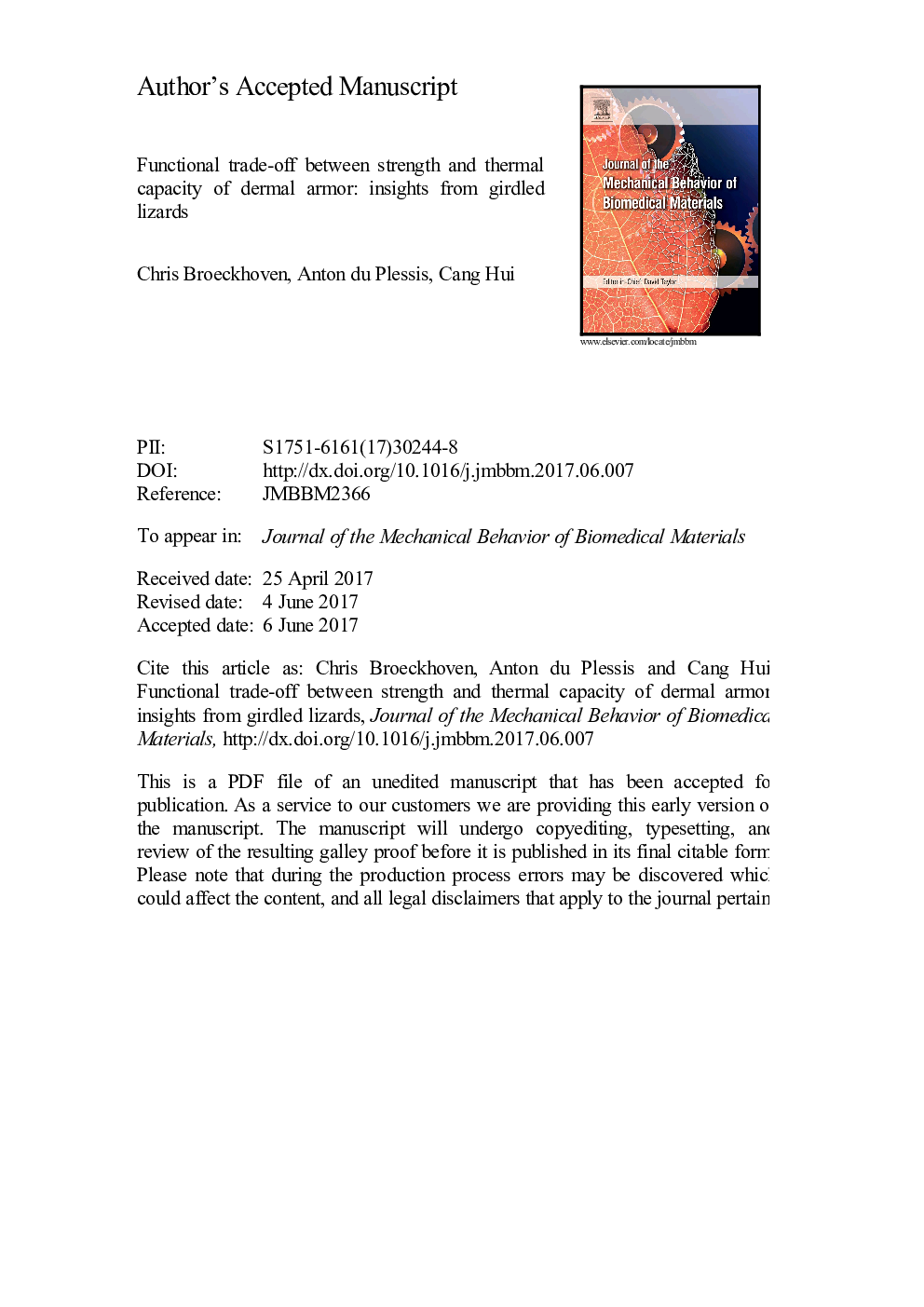| Article ID | Journal | Published Year | Pages | File Type |
|---|---|---|---|---|
| 5020409 | Journal of the Mechanical Behavior of Biomedical Materials | 2017 | 22 Pages |
Abstract
The presence of dermal armor is often unambiguously considered the result of an evolutionary predator-prey arms-race. Recent studies focusing predominantly on osteoderms - mineralized elements embedded in the dermis layer of various extant and extinct vertebrates - have instead proposed that dermal armor might exhibit additional functionalities besides protection. Multiple divergent functionalities could impose conflicting demands on a phenotype, yet, functional trade-offs in dermal armor have rarely been investigated. Here, we use high-resolution micro-computed tomography and voxel-based simulations to test for a trade-off between the strength and thermal capacity of osteoderms using two armored cordylid lizards as model organisms. We demonstrate that high vascularization, associated with improved thermal capacity might limit the strength of osteoderms. These results call for a holistic, cautionary future approach to studies investigating dermal armor, especially those aiming to inspire artificial protective materials.
Related Topics
Physical Sciences and Engineering
Engineering
Biomedical Engineering
Authors
Chris Broeckhoven, Anton du Plessis, Cang Hui,
